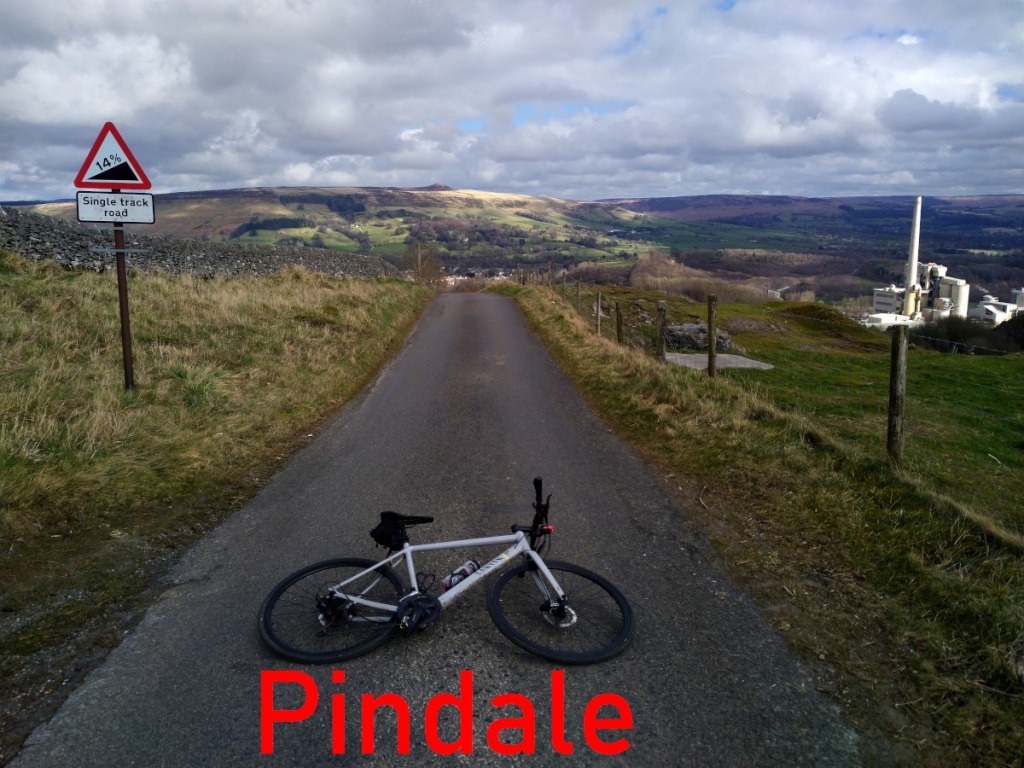- Pindale
- Length: 2.45 miles
- Avg gradient: 5.9% (although it’s 10.5% if you start at the switchback)
- Peak gradient: 17.5%
- Difficulty: 4/5
- Likelihood of encountering unpleasant motor-vehicles: 1/5
- Elevation gain: 772ft
- Strava

Hard as cement.

As you travel around the Hope Valley you can’t escape the extraordinarily ugly cement works that sit, like a festering scar, bang in the middle of the valley. How they ever got beyond planning permission, is a mystery. However, there is a lively, little known climb that snakes around the works’ back that makes it worth venturing over there.

Most of the segments around here commence in Castleton but it seems more appropriate somehow to start at the entrance to the cement works themselves. It’s a very gentle start as you leave the industrial monstrosity behind, along a singletrack road with a beautiful view of the Hope Valley and past a campsite. The gradient is creeping up from 5% to about 10% as you take the first sweeping bend to the right and the road surface starts to worsen.

Around the corner and you’re into low-medium double figures as the climb begins and the valley opens up below you. After about 300 metres of climb, however, the road drops away into a speedy descent but take care as the surface is awful and also probably covered in detritus.

When you reach the junction, take the sharp left up the hill, through the tree-tunnel, where the climb really begins. It’s pretty much straight into a 20% incline for about 300 metres before a short level-off as the road bends left. Recharge and prepare for the jewel in this climb: the sweeping bend as the trees drop away and the expansive vista of the Hope Valley opens below you, right in the middle of which is the pig-ugly, brutalist cement works. I’ve got different readings but I think the incline around the corner is about 15% but totally worth it. As you switchback, take a moment to enjoy the sight of Mam Tor and Loose Hill in the distance, but don’t forget that you’re far from done with the climb.

As the gradient drops to a more manageable 5% it may look like you’re approaching the top, but it’s just the first of a couple of false summits before the end. There’s a slight increase in steepness as you wiggle up the road, but nothing that feels insurmountable and it is now more of a psychological battle, as, having tackled the hardest section, the pesky hill just keeps going at 8%, with no end in sight.

It continues in this vain for about 3/4 of a mile, across exposed exposed moorland, skirting the top of the cement works quarry, before, finally, finally, you reach the top, marked by a drystone wall line and what was presumably, once a gate.












